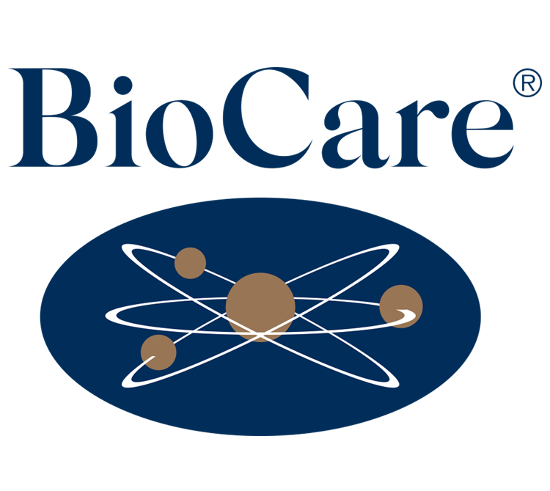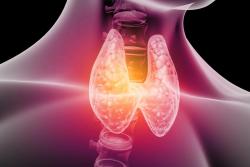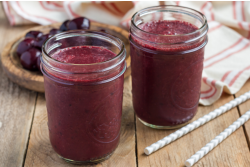Male health issues are on the rise but they aren’t talked about enough! We regularly support men with a range of health challenges and it has become clear to us that there needs to be a wider dissemination of knowledge about the common drivers of male health issues and the natural interventions which can help.
We have many conversations with men who are under significant pressure from the constant juggle of work and family life. Coupled with the prevalence of processed food[i] and environmental toxins,[ii] this decline in men’s health comes as no surprise.
Strikingly, global sperm health has declined by 50-60% within the last 40 years.[iii] Gentlemen, there is much that you can do to take control of your health. Now is the time for action.
WHAT IS TESTOSTERONE
Testosterone is a member of the androgen family, alongside its potent cousin dihydrotestosterone (DHT). The body makes DHT from testosterone via the 5α-reductase (5α-R) enzyme. Women make a little testosterone but most is converted into a type of oestrogen called oestradiol (E2) via aromatase. Androgens are best known for their role in the development and health of the male reproductive tract and masculinising secondary sexual characteristics (e.g. body hair, increased muscle mass), yet they actually benefit many body systems: [iv]
- Nervous: supports mood and motivation.[v]
- Energy: supports fat metabolism,[vi] insulin sensitivity,[vii] and mitochondrial energy production.[viii]
- Cardiovascular: supports blood vessel function and heart muscle function.[ix]
- Structure: supports bone density[x] and muscle strength.[xi]
Dysfunctional androgen balance can therefore be a significant yet under-appreciated driver of many male health issues.
WHEN THINGS GO WRONG – NOT TOO MUCH, NOT TOO LITTLE
‘Low Androgen’ Scenario
Testosterone levels naturally decline with age, usually from 30 years plus.[xii] This is the andropause.[xiii] Unlike the menopause which is characterised by a relatively swift, marked decline in oestrogen alongside distinctive symptoms (e.g. hot flushes), the onset of the andropause is insidious and can go unnoticed as many of the symptoms are quite generic (e.g. fatigue, depression). Other symptoms include low libido and erectile dysfunction. The andropause can have a pervasive impact on male health. For instance, low testosterone is associated with diabetes,[xiv] cardiovascular risk,[xv] and osteoporosis.[xvi]
The andropause often co-presents with high E2. This can arise when aromatase becomes over-stimulated, potentially by inflammation.[xvii] So, exposure to inflammatory drivers such as a low omega-3 status,[xviii] processed diet,[xix] and gut dysbiosis and permeability[xx] may have a role to play. Excessive conversion of testosterone to E2 lowers testosterone further, while simultaneously increasing E2 beyond the normal threshold for a man. This can drive excessive fat storage as well as gynecomastia (enlarged male breast tissue).
‘High Androgen’ Scenario
This involves a state of excessive androgenic activity characterised by too much DHT. This is commonly associated with benign prostatic hyperplasia (BPH),[xxi] male-pattern baldness,[xxii] and prostate cancer.[xxiii] A man can have low testosterone but high DHT when 5α-R becomes over-stimulated, potentially due to blood glucose dysregulation.[xxiv]
WHERE TO START
The common denominators of male hormone imbalance are poor sleep, poor diet, a sedentary lifestyle, and high ‘life load’. Improvement in these can give a man’s body the conditions it needs to regulate its hormones better. While ageing is an inevitable driving force behind declining testosterone, we can slow this process down and prevent it being complicated by an excessive production of E2 and/or DHT. Sex hormone testing can help pinpoint the exact nature of a man’s hormone imbalance, but the starting point is focusing on consolidating the foundations of healthy male hormone regulation.
The 4 Pillars of Male Hormonal Health
- A lack of sleep puts the body into a stress state which can lower testosterone![xxv] Read this blog for our top sleep tips.
- Focus on a colourful, wholefood diet rich in a range of plants and anti-inflammatory foods such as turmeric[xxvi] and oily fish.[xxvii] Also minimise intake of inflammatory foods, notably refined carbohydrates, fried foods, and alcohol.[xxviii] Alcohol can reduce testosterone and increase E2![xxix]
- Frequent exercise is associated with healthier testosterone levels.[xxx]
- The more stressors in your life, the greater your ‘life load’, and the greater the negative health impact of stress. Read this blog for our top stress tips.
Personalised Nutrient Support
- Zinc supports testosterone synthesis [xxxi] and sperm health.[xxxii],[xxxiii]
- Vitamin D3 supports immunity,[xxxiv] bone density, [xxxv] and mood. [xxxvi]
- Folate as methylfolate supports methylation which is important for sperm health[xxxviii],[xxxix] and every bodily system, not least the cardiovascular system by helping to regulate homocysteine.[xl] Folate isn’t just for women!
- CoQ10 is a potent antioxidant, providing protection for your cells and tissues.[xli],[xlii]
- Saw palmetto[xliii] and nettle root[xliv] have both been used traditionally to support male health.[xlv]
- Lycopene is highly concentrated in the prostate tissue and naturally protects our cells from free radical damage. [xlvi]
For tailored advice, get in touch with our Clinical Nutrition team and consider seeing a private Registered Nutritional Therapist.
Got a question?
The brand you can talk to:
We have a team of Nutritionists at the end of our advice line, open to you, for product support and advice (5 days a week). 0121 433 8702 or clinicalnutrition@biocare.co.uk.
Not registered for an account with BioCare®?
You can register now to receive up to date news, product information and exclusive offers whether you are a consumer, practitioner or retailer.
References
[i] Poti JM et al. Ultra-processed food intake and obesity: what really matters for health – processing or nutrient content. Curr Obes Rep. 2017; 6(4): 420-431.
[ii] Prüss-Ustün A et al. Knowns and unknowns on burden of disease due to chemicals: a systematic review. Environ Health. 2011; 10: 9.
[iii] Levine H et al. Temporal trends in sperm count: a systemic review and meta-regression analysis. Human Repro Update. 2017; 23(6): 646-659.
[iv] Tyagi V et al. Revisiting the role of testosterone: are we missing something? Rev Urol. 2017; 19(1): 16-24.
[v] Bialek M et al. Neuroprotective role of testosterone in the nervous system. Pol J Pharmacol. 2004; 56(5): 509-18.
[vi] Kelly D & Jones T. Testosterone: a metabolic hormone in health and disease. J of Endocrinol. 2013; 217(3): 25-45.
[vii] Rubinow KB et al. Acute testosterone deprivation reduces insulin sensitivity in men. Clin Endocrinol. 2012; 76(2): 281-288.
[viii] Rovira-Llopis S et al. Low Testosterone levels are related to oxidative stress, mitochondrial dysfunction and altered subclinical atherosclerotic markers in type 2 diabetic male patients. Free Radical Biology & medicine. 2017; 108: 155-162.
[ix] Webb CM, Collins P. Role of testosterone in the treatment of cardiovascular disease. Eur Cardiol. 2017; 12(2): 83-87.
[x]Fui M et al. Effect of testosterone treatment on bone remodelling markers and mineral density in obese dieting men in a randomized clinical trial. Sci rep. 2018; 8(9099): 27481-3.
[xi] Wang C et al. Transdermal testosterone Gel Improves Sexual Function, Mood, Muscle Strength, and Body Composition Parameters in Hypogonadal Men. J Clin Endocrinol & Metab. 2000; 85(8): 2839-2853.
[xii] NHS. The ‘male menopause’. 2019. Accessed: August 14th 2020. https://www.nhs.uk/conditions/male-menopause/
[xiii] Golan R et al. Age-related Testosterone Decline is due to Waning of Both Testicular and Hypothalamic-Pituitary Function. Aging Male. 2015: 18(3): 201-4.
[xiv] Yao Q-M et al. Testosterone level and risk of type 2 diabetes in men: a systematic review and meta-analysis. Endocrinol Connect. 2018; 7(1): 220-231.
[xv] Goodale T et al. Testosterone and the heart. Methodist Debakey Cardiovasc J. 2017; 13(2): 68-72.
[xvi] Golds G et al. Male hypogonadism and osteoporosis: the effects, clinical consequences and treatment of testosterone deficiency in bone health. Int J Endocrinol. 2017. 1-15.
[xvii] Zahid H, Simpson ER, Brown KA. Inflammation, dysregulated metabolism and aromatase in obesity and breast cancer. Curr Opin Pharmacol. 2016; 31: 90-96.
[xviii] DiNicolantonio J & O’Keefe J. Importance of maintaining a low omega-6/omega-3 ratio for reducing inflammation. Open Heart. 2018; 5(2): 946.
[xix] Chai W et al. Dietary Red and Processed Meat Intake and Markers of Adiposity and Inflammation: The Multiethnic Cohort Study. J Am College Nutr. 2017; 36(5): 378-385.
[xx] Vivinus-Nebot M et al. Functional bowel symptoms in quiescent inflammatory bowel diseases: role of epithelial barrier disruption and low-grade inflammation. Neurogastroenterology. 2014; 63(5): 744-752.
[xxi] Das K & Buchholz N. Benign prostate hyperplasia and nutrition. Clin Nutr ESPEN. 2019; 33(5): 11.
[xxii] Adil A & Godwin M. The effectiveness of treatments for androgenetic alopecia: A systemic review and meta-analysis. J Am Acad Dermatol. 2017; 77(1): 136-141.
[xxiii] Miyoshi Y et al. High testosterone levels in prostate tissue obtained by needle biopsy correlate with poor-prognosis factors in prostate cancer patients. BMC Cancer. 2014; 14(717): 1-7.
[xxiv] Kayampilly PP et al. Stimulatory effect of insulin on 5α-reductase Type 1 (SRD5A1) expression through an Akt-dependent pathway in ovarian granulosa cells. Endocrinology. 2010; 151(10): 5030-5037.
[xxv] Luboshitsky R et al.Disruption of the nocturnal testosterone rhythm by sleep fragmentation in normal men. J Clin Endocrinol metab. 2001; 86(3):1134-39.
[xxvi] Chakravarty et al. Comparison of efficacy and turmeric and commercial curcumin in immunological functions and gene regulation. Int J Pharmacol. 2009; 5(6): 333-45.
[xxvii] Safarinejad et al. Relationship of omega-3 and omega-6 fatty acids with semen characteristics, and anti-oxidant status of seminal plasma: A comparison between fertile and infertile men. Clin Nutr. 2010; 29: 100-5.
[xxviii] Giugliano D, Ceriello A, Esposito K. The effects of diet on inflammation: emphasis on the metabolic syndrome. J Am Coll Cardiol. 2006; 48 (4): 677-85.
[xxix] Walter M et al. Controlled Study on the Combined Effect of Alcohol and Tobacco Smoking on Testosterone in Alcohol-Dependant Men. Alcohol and Alcoholism. 2007; 42(1): 19-23.
[xxx] Kraemer J et al. Testosterone physiology in resistance exercise and training. 2012; 40: 1037-1053.
[xxxi] Prasad A et al. Zinc status and serum testosterone levels of healthy adults. Nutrition. 1996; 12(5): 344-8.
[xxxii]Henkel R et al. Molecular aspects of declining sperm motility in older men .Fertil Steril. 2005; 84(5):1430-7.
[xxxiii] Yamaguchi S et al. Zinc is an essential trace element for spermatogenesis. Proc Natl Acad Sci U S A. 2009: 106(26):10859-64.
[xxxiv] Yang B et al. Associations between testosterone, bone mineral density, vitamin D and semen quality in fertile and infertile Chinese men. Int J Androl. 2012; 35(6): 783-92.
[xxxv] Griffin, M.D., Xing, N. and Kumar R. (2003) Vitamin D and its analogs as regulators of immune activation and antigen presentation. Annual Review of Nutrition, 23, 117-145.
[xxxvi] Bischoff-Ferrari et al. Fracture prevention with vitamin D supplementation: a meta-analysis of randomized controlled trials. JAMA. 2005; 293 (18): 2257-64.
[xxxvii] Khoraminya N et al. Therapeutic effects of vitamin D as adjunctive therapy to fluoxetine in patients with major depressive disorder. Aust N Z J Psychiatry. 2013; 47(3): 271-5.
[xxxviii] Cornet D et al. Association between the MTHFR-C677T isoform and structure of sperm DNA. J Assist Reprod Genet. 2017; 34 (10): 1283-1288.
[xxxix] Boxmeer et al. Low folate in seminal plasma is associated with increased sperm DNA damage. FertilSteril 2009;92 (2):584-56
[xl] Yang et al. Efficacy of folic acid supplementation in cardiovascular disease prevention: an updated meta-analysis of randomized controlled trials. Eur J Intern Med 2012; 23 (8): 745-54.
[xli] Alahmar AT et al. Coenzyme Q10 improves sperm parameters, oxidative stress markers and sperm DNA fragmentation in infertile patients with idiopathic oligoasthenozoospermia. World J Mens Health. 2020; 10.5534/wjmh.190145
[xlii] Safarinejad MR et al. Effects of the Reduced Form of Coenzyme Q10 (ubiquinol) on Semen Parameters in men with Idiopathic Infertility: A Double-Blind, Placebo Controlled, Randomized Study. J urol. 2012; 188(2); 526-31
[xliii] Kwon Y. Use of saw palmetto (serenoa repens) extract for benign prostatic hyperplasia. Food Sci Biotechnol. 2019; 28(6): 1599-1606.
[xliv] European Medicines Agency, 2012. Assessment report on Urticadioica L., Urticaurens L., their hybrids or their mixtures, radix Based on Article 16d(1), Article 16f and Article 16h of Directive 2001/83/EC
[xlv] Oelke M et al. Fixed-dose combination PRO 160/120 of sabal and urtica extracts improves nocturia in men with LUTS suggestive of BPH: re-evaluation of four controlled clinical studies. World J Urol. 2014;32(5):1149-54.
[xlvi] M Rafi et al. Lycopene modulates growth and survival associated genes in prostate cancer. J Nutr Biochem. 2013; 24(10): 1724-34





